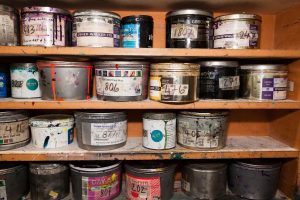Selecting the right ink for product printing is a critical decision that impacts quality, durability, and cost-effectiveness. Whether you’re printing packaging, labels, textiles, or promotional materials, understanding ink properties and their compatibility with your project is essential. Below, we break down the key considerations to help you make an informed choice.
1. Understand the Types of Ink
The first step is to familiarize yourself with common ink categories and their applications:
a. Dye-Based Inks
- Pros: Vibrant colors, ideal for high-resolution images (e.g., photo printing). They penetrate substrates like paper, creating smooth gradients.
- Cons: Poor water and UV resistance; prone to fading over time. Best for indoor use or short-term projects.
b. Pigment-Based Inks
- Pros: Excellent durability, water-resistant, and UV-stable. Ideal for outdoor signage, archival documents, or products exposed to harsh conditions.
- Cons: Slightly duller colors compared to dye inks.
c. UV-Curable Inks
- Pros: Instant drying under UV light, eco-friendly (no solvents), and compatible with rigid materials like glass, metal, and plastics. Perfect for industrial printing.
d. Solvent Inks
- Pros: Adheres well to non-porous surfaces (e.g., vinyl, banners). Highly durable for outdoor use.
- Cons: Contains volatile organic compounds (VOCs), requiring proper ventilation.
e. Eco-Solvent Inks
- A safer alternative to traditional solvent inks, with lower VOC emissions. Suitable for flexible packaging and adhesive labels.
f. Specialty Inks
- Metallic/Pearlescent Inks: Add shimmer effects for luxury packaging.
- Conductive Inks: Used in printed electronics.

2. Match Ink to Your Substrate
The material you’re printing on (the substrate) dictates ink compatibility:
- Paper/Cardboard: Opt for dye or pigment inks. For glossy finishes, pigment inks prevent smudging.
- Textiles: Use water-based or sublimation inks for fabrics like polyester.
- Plastics/Glass: UV-curable or solvent inks ensure adhesion.
- Metal: Solvent or UV inks are ideal for durability.
Pro Tip: Always test ink-substrate compatibility. For example, low-viscosity inks work better on porous materials, while thicker inks suit rigid surfaces.
3. Consider Printing Technology
Different printers require specific inks:
- Inkjet Printers: Use dye or pigment inks. Check OEM compatibility to avoid clogging.
- Screen Printing: Thick, viscous inks (e.g., plastisol for textiles).
- Offset Printing: Oil-based or UV inks for high-volume projects.
- Digital Flatbed Printers: UV-curable inks for versatility across materials.
4. Evaluate Performance Requirements
Assess your project’s demands:
a. Durability
- Outdoor Use: Choose UV-resistant, waterproof inks (e.g., pigment or solvent-based).
- Abrasion Resistance: Required for frequently handled items like packaging.
b. Color Accuracy
- For brand-specific colors (e.g., Pantone shades), select inks with precise color-matching capabilities.
c. Drying Time
- High-speed production lines benefit from UV or solvent inks that dry instantly.
5. Factor in Cost and Sustainability
- Initial Cost vs. Longevity: Pigment and UV inks may cost more upfront but reduce reprints due to durability.
- Eco-Friendly Options: Water-based and UV-curable inks minimize environmental impact.
6. Choose Reputable Brands
Stick to trusted manufacturers like Epson, HP, or Sun Chemical for consistent quality. Third-party inks can save costs but verify compatibility and certifications (e.g., ISO standards).
7. Test Before Full-Scale Production
Conduct small trials to check:
- Adhesion and scratch resistance.
- Color consistency under different lighting.
- Compliance with industry standards (e.g., food-safe inks for packaging).
8. Storage and Handling
- Store inks in temperature-controlled environments to prevent separation or clumping.
- Avoid mixing ink batches to ensure consistency.
Conclusion
Choosing the right ink involves balancing technical requirements, budget, and environmental concerns. By understanding your substrate, printer type, and performance needs, you can optimize print quality and longevity. Always prioritize testing and consult suppliers for tailored recommendations.

